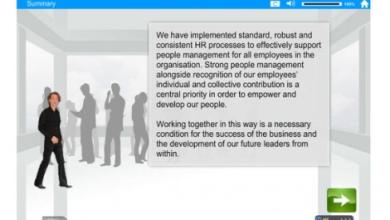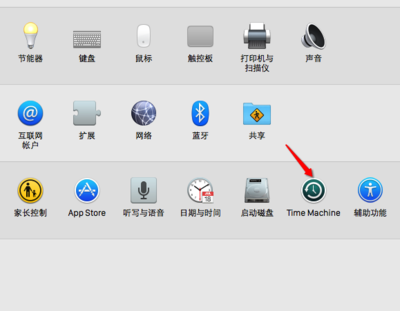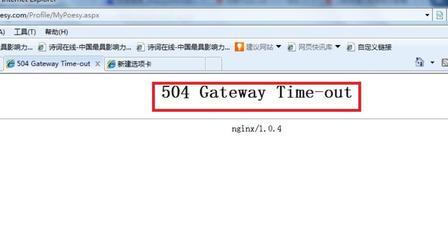TIME MANAGEMENTSome of the materials in this course are based on those prepared by Harris van Meegen Consultants
Objectives
This course provides training in some basic skills needed to plan and use your work time more effectively.It provides some perspectives on time and several practical exercises to:
61607; convince you that time is something that you can manage;61607; give you some tools so that you can critically look at the way that you handle time now and start to manage it as you want; 61607; make decisions about your use of time based on work plans.Course Structure The course has several sections: 61607; expectations, perceptions and features of time 61607; common time wasters and solutions 61607; how you personally use time 61607; using work plans to manage time 61607; setting priorities for time management. The course is designed as an introduction only supplying a framework for making important decisions about how time should be spent, and then how to ensure that you spend your time on these important tasks. A number of useful tips are provided.But first let's step back and have a look about our expectations and perceptions of time management.Work Sheet 1
Your Expectations and Feelings about Time Management
Please take a few minutes to think about what you feel about these questions. Please place your answers on the cards provided.1. Write down 2 things that you like about the way that you manage your own time.2. Now write down 2 things that you do not like about the way that you manage your own time.
3. What do you want to achieve from this time management training ?
Time Wasters61656; those that start in your environment
61656; those that start with yourselfBut they can be managed and controlledThere are lots of practices out there that we can call Time Wasters. These are ways that we spend time not doing what we want to do or have planned to do (even if we did not really want to do them, but the boss says we have to.)
Some of these time wasters start out there in the environment at work. They can be unplanned visitors, people who do not show up on time, meetings that just go on and on and do not end up with the expected results. And then maybe you are asked to do too much or to do something you really do not know how to do. These types of requests are time wasters not just for you, but for your entire work team.
And then there are the time wasters that start with you! You must have some examples of these. Maybe you tend to be on the disorganised side and have trouble finding things on your desk or in your computer files. Or perhaps you find it difficult to say "No" when you are asked to do something for someone, or to take on extra work. Perhaps you are a procrastinator putting off those difficult jobs until later, hoping they might actually go away. Or just do not know where to start? Have you lost interest in the work, or maybe even you have become "burned out"?But each of these time wasters can be managed. The key is to recognize them, and then take positive actions to deal with them. (work sheets 2 and 3)Finally, lets actually see how we use time at work! (work sheet 4)Features of Time61656; Constant
61656; all there is61656; never enough
61656; just simply exists61656; perceptions varyBut make decisions about how to use it!Time is constant. There are 60 seconds in every minute, 60 minutes in every hour, 24 hours in each day. There are usually only 5 working days in every sane work week. Sometimes there are 4, and sometimes even 6 or 7. But there are never, never 8 (despite the old Beatles tune!)
You have all the time that there is Never any more, but Never any less!
No matter how much time there is there is never enough! !Time is simply a commodity, it is neither negative nor positive. It simply is!But the way we perceive it depends on our culture, our own personality, or even the part of the day. Cultures which do not have a need for appointments do not use clocks. People who feel that they must do everything in running their own business usually keep strict, tight daily schedules with lots of short appointments.All these features lead to one conclusion like money, Time is a commodity to be used. There is never enough, and we can always use more than we have. So, like money, we need to make decisions often tough decisions about what we spend it on, and how much we spend.We need some good tools to help us make good decisions,
and some tips on how to avoid wasting time.Work Sheet 2
Time Wasters
Let's have a close look at our own time wasters.
8226; What are the 3 most serious time wasters in your environment ?1.
2. 3.8226; What are the 3 most serious time wasters you do yourself ?1.
2. 3.8226; How do you think you can deal with these in the future?Work Sheet 3
Solutions to Time Wasters
Manaqe your Visitors 8226; allocate time of day for visitors and let frequent visitors know about this time slot 8226; get into the habit of making appointments and ask your colleagues to make appointments with you8226; let frequent visitors know when you have regular meetingsToo Many Meetings 8226; ask for agenda beforehand, and then decide if this one will actually benefit your work objectives 8226; at start of meeting, ask to set a time limit when you will finish 8226; during the meeting summarize progress, and at end summarize who will do what nextExpected to do too much 8226; agree on priorities with team and/or "supervisor"; staff assessment systems help 8226; politely refuse by giving people alternatives, others who might be able to do it, or give them a date when you might be able to fit it in 8226; if the boss asks, then ask them what they want you to drop off your list of things to doDisorganised8226; use files and directories, both hard copy and computer 8226; have a "further action" box or "to do" directory on your desk, in your emai I 8226; when you start a task, finish it before going onto something else, or stop when you have exceeded your allotted time for that taskProcrastinate 8226; set deadline to finish and start8226; ask for advice on how to start8226; break big activities into smaller tasks8226; do the first thing NOW8226; just start with one point"No show" appointments8226; take work along with you if you are visiting someone else8226; make appointments and get in the habit of being punctual8226; wait for a given time period (no more than 30 minutes), if they are still not available, ask them to call youLack of interest8226; you need to discuss this with other team members!!Burn out8226; pace yourself through good work planning with the rest of the team take your well earned holidayWork Sheet 4Time Analysis
If you feel that you are having trouble managing your time, then let's have a close look at how you spend your work time.
First, we need an accurate picture of the way you spend your time. On an actual work day, keep track of what you do and for how long. Lawyers who bill their clients for the actual amount of time they spend, keep track of how they spend every 6 minute segment (one tenth of an hour) and bill the appropriate client for each 0.1 hour. We won't be as fussy as lawyers, so we will just keep track of every 30 minutes. But if you tend to change what you are doing more often, then chose a smaller time period.
Make up a chart, along the side with the most common types of jobs that you do most days, like:
Activity 7.00 7.15 7.30 7.45 8.00 8.15 8.30 8.45
download and read emails 5’ answer emailsfile answer phone III write trip, progress report30% prepare payment reimbursements attend meetingseat I make cup of coffee I I.
Include on the list the common time wasters you know happen to you: - interruptions about work, by whom? - interruptions not about work, by whom?Along the top break the day up into 15 minute segments. Mark down which of those activities you worked on during the period. If events are very short, like an interruption, just note the number which occurred in that period.
It is best to complete this chart for several separate days, even for an entire week. This is so you can get a pretty good idea of the range of days that you can have the good days and the bad days as well. Wait until you have finished charting all the days in your sample before you complete the analysis below.
After you have completed the charts for a number of days, then quickly add up the time spent on each of your listed activities.
8226; Make an estimate of how much time was spent on your priority activities for the day. 8226; Compare this time with what you had estimated it would take you, refer back to your weekly activity work sheet. 8226; What part of your day was the most productive, which least? 8226; What were your time wasters?8226; Are there any recurring patterns of inefficiencies? 8226; What activities did you do which did not contribute to your weekly objectives? 8226; What types of things do you tend to do which are not really necessary to get the job done?8226; On average, what percentage of work time do you feel you are productive? What is your reaction to this?Remember, this exercise is to help yourself. You do not need to show this to anyone else, so please be very honest with your accounting of your time. It is the only way you will get an accurate picture of the way you spend your time, and identify those time wasters we all have!Decisions about when and how much time to spend should be based on good work plansUse quarterly targets or milestones
Co ordinate team activities with quarterly timetables showing 13 weeks listing all major activitiesDecisions need to be made by the team if there is too much to do and not enough weeks and days to do it. These decisions also help team co ordination and commitment.
Work plans are the key to good time management.
An effective work plan can be an annual plan that sets out targets, or milestones, that should be achieved. If the work planning has been done well, it was probably developed as a team exercise, with all members contributing to it and agreeing what the important milestones are, and that they could be achieved during this year. A good work plan also usually states who is responsible for achieving that milestone, and who is also involved in it. So the work plan represents the agreements of your own work teams.
Milestones should be listed as targets for each quarter of the year. This way, you start with the really important targets, rather than those which are ongoing and never seem to actually become a milestone, a major eventl (work sheet 5).
Milestones only happen after a lot of hard work over months. If you want to hold a first ever workshop among adat groups from all over the country, you will have many separate tasks. Some of these will need to be done before others, like you have to book a venue before you can send out invitations, otherwise you do not know where or when to invite your participants to come. These tasks are often done by different people, and they need to work together, to be co ordinated. One way of ensuring this co ordination is to do quarterly work plans a detailed week by week time table that shows who has to do what on your team, and when.
The quarterly timetable can be presented as a table with columns for activities, key players, and each of the 13 weeks in a 3 month quarter. Each row is an activity that has to be done if the quarterly target is to be completed. As much detail as can be planned should be included. All routine or administrative activities such as Team Meetings should also be included, especially if these involve more than one person. And do not forget to include holidays and leave for team members, as this is time that they cannot devote to work! (work sheet 6)
The time table should be done by the team who actually must do the work. The team should work through the list of activities, estimating the number of days needed to complete it, and decide which week it should happen, if it is an event such as a meeting, or when it should be completed, like a draft training manual. As the team works through the activities, they often discover that they have over committed themselves they are trying to achieve too much, have too many events scheduled for the quarter. They run out of weeks and days in a week needed to complete the activities.
Good time decisions include restricting the number of days to spend on an activity, no matter how important it might seem.REMEMBER!! use SMART objectives have priorities plan time limits make decisions
Pull out your own activities from the team timetable, and
make your own personal timetableUse weekly work sheets listing objectives for the week, activities with estimated time, scheduled day and priority.If this happens, then the team must decide which
activities are the most important, which can be dropped, delayed, and how much time they can really afford to spend on each ofthem. This decision making becomes a lot easier when they have a timetable in front of them.When making these time tables, remember the following:
- have clear objectives which are SMART
- have a sense of priorities, what are the most important milestones and activities to achieve
- limit the time spent on any task in your plans, based on team's judgement and previous experience. Have start dates as well as end dates!
- make decisions about how much time and what will be done; do not try to do everything when it is clear that it cannot all be done.
Once the team has an agreed quarterly time table, you can now use this to draw up your own time table. Pull out all those activities that you are involved in, especially those you have the lead for. If you find that your timetable looks
exactly like the team's that you are involved in all activities then you and the team need a quick session in ensuring"value added". Don't be involved unless you have to, that you are the only one with the skills that task requires. Too often bosses especially end up involved in everything, simply because they do not effectively delegate. (But that is another training session!)Now comes the next challenge probably the most difficult for each inpidual. Transforming the quarterly time table into a weekly and even daily work sheet. If we use the quarterly time table, then each week has some clear targets whatever it is that needs to be finished this week. They can be broken down into activities and inpidual tasks, with an estimate of time needed to complete it, or even more importantly, the amount of time we are willing to give it. This is especially important for those type of tasks that are very fluid, taking up all the time we are prepared to give it. Writing reports are very common fluid tasks! ! It also helps to give your tasks priorities. A simple, two dimension system:
8226; essential non essential (but still important or we wouldn't be doing it!) 8226; urgent non urgent (this one is often determined by others!)Work Sheet 5Annual Work Plan with Quarterly Milestones
8226; Start with Project Map
For each objective, there should already be a set of activities that have been agreed. Set specific targets to be met for each 3 month period.For example, "facilitate partners in use of IDF"
- Qtr 3 (July Sept): 4 partners facilitated; results included in Technical Report- Qtr 4 (Oct Dec): 5 more partners facilitatedActual result indicators can be readily used as milestones.
For example, "number of publications on community based NRM"- one NRM newsletter article each quarter- one facilitation tool on web site each quarterAlso, include who is responsible, and who is involved in reaching the milestone.
A simple format that can be used:

Results and
Activities Who Qtr 1 Qtr 2 Qtr 3 Qtr 4Pilot villages empowered to control destructive practices1 pilot implement bylaws DCrdPilot villagecttmees - organize legal assist, draft bylaws1 pilot trials control of dp villageproposal monitoractions monitor evaluation report of impactstraining needs for enf orcement identified Extension Offs needsassessed -1st training retraining of dynamitef ishers visit Mtwera id who & their interests write training proposalWork Sheet 6
Quarterly Timeline
Start with the targeted milestones from the annual work plan. Break these into all the component activities be as detailed as you can at this stage. Certainly, break it down into tasks which have to be done by different people. Use the 13 week timeline there are 13 weeks in every 3 months!! Whew! an extra week!
Targets Who 1 2 3 4 5 6 7 8 9 10 11 12 13
Pilot controt of destruct. Practices Extensn worker, village org. study tour ctmee, CR expert 5 - do study tour all 5 prepare proposal EW,ctee 3 organize MP PC 1 site visit, agreement PC,MP, ctee 2 - commence trials ctee 5 - monthly check MP, PC 1 report EW, ctee 2Priority classes are:1 urgent and essential2 essential, not urgenturgent, not essential3 not urgent, not essentialTo summarize
Some more TipsAnd remember !!It often helps to assign a particular day to get these tasks done. Measure your progress on a day by day basis, because this gives you enough space to change and adapt if you do not manage to get done what you planned. If you only measure progress on your activities at the end of the week well, that is an entire week gone without adjustment. A few weeks like that, and you will find yourself hopelessly behind in your quarterly timetable. And do not forget to include activities that you did not manage to do from your previous week's plan. These activities will probably have higher priority now then they did before, as they might be more urgent now, especially if someone else is waiting for it! It is important to build in some "catch up" time during the week, to cope with unexpected demands (such as from Head Office or the donor!) Don't timetable every minute of every day. (work sheet 7)8226; List and prioritize weekly objectives .
8226; Make a daily "To Do" list and prioritize it . 8226; Devote primary attention to your "A"s8226; Handle each piece of paper only once! . 8226; Continually ask "What is the best use of my time right now?""The best way to begin, is to begin"Marie Edmond JonesWork Sheet 7Weekly Planning Work Sheet
8226; Start with the Team's quarterly timeline.
8226; Pick out all the activities you must do give those you are actually responsible for, as priority A.8226; Develop your own quarterly timeline.8226; Each week, list your objectives at the top.8226; List the activities needed to achieve those targets.8226; Now, BEFORE you do anything else, give each activity a priority A CA "urgent & essential"; others depend upon you to do this, this is a critical step that prevents other things from happening. Include those activities that now have a deadline that must be met this week. Often these will include last week's B & C priorities. Spend most of your attention here!
B "essential, not yet urgent" (or urgent, but not necessarily essential); and if I don't get these done this week, they will become next week's "A".C "not yet urgent, not essential, but nice to do", often these do not get done, until deadlines push it into the B or A category.Estimate the amount of time you can afford to spend on the item. This mayreflect priority and importance, or simply the difficulty of doing the task.Assign a day to do each. And keep to that schedule. WEEKLY PLANNING WORKSHEETFor week of: ___________Objectives:1. _________________________________________________________________2. _________________________________________________________________3. _________________________________________________________________Activities A/B/CPriority Est. Time Assigned DayWork Sheet 8Performance Contract
List two things that you promise yourself and the Team that you will now do differently, so that you can manage your time better.
1.
2.Keep this paper and check yourself in about 4 weeks time to see if you have kept your promises!Effective Time
ManagementEver wonder how some people can fit so many activities into their schedules, while others barelyhave time to attend classes? Are they smarter? Doubtful. More organized? You’re getting warmer.Better at managing their time? Bingo!!Time management is self management. Although this handout will give you some pointers on how tomanage your time, it is important to realize that only you know your peak work hours, your attentionspan, and your eating and sleeping needs. Time management is a highly personalized skill, and whatevermethod works for you is the right one.PrioritizingThe next step is to prioritize the items on yourlist. Assign an “A” to those things that you HAVETO DO; “B” to the tasks you SHOULD DO; and“C” to those items that can be DEFERREDuntil the next day. Keep in mind due datesfor projects and if they are for a class. Youmight consider how much of the final grade thatparticular project is worth (5% or 50%). Thiscan help you decide how high a priority shouldbe assigned to the project.Don’t procrastinate! Try not to leave projectsfor the last minute – that's the least effectiveway of getting things done. Sometimes latenight cramming will be necessary, but try tokeep it to a minimum.Following the steps of Organizing, Prioritizing, and Scheduling will help you to use yourtime more effectively. One final hint: as you go through the day, ask yourself, “What is thebest use of my time right now?”SchedulingNow that you have your prioritized list ofeverything you need and want to do, you shouldlook at your schedule to fit your projects aroundthe “givens” (class, work, sleep, etc.) in yourday. Your schedule should be flexible. Leaveroom for breaks, socializing and those littlethings that tend to pop up.Allow for the unexpected!Don’t try to plan out every minute of your day.As you are scheduling, keep your personalneeds and habits in mind. For example, don’tschedule study time in the morning if you like tosleep in late. Be realistic and make a schedulewhich you can be sure to stick to.Three steps to effective time management are:OrganizingThe more organized you are, the more effectively you will be able to use the 24 hours in each day.Ideally, each morning you should make a list of everything you want or need to get done thatday. (If it works better for you, you can also do this at night before you go to bed.) Don’t thinkabout which tasks are most important at this point. Just write them all down. Once you getin the habit of doing this, you might want to organize yourself for a few days in advance tohelp plan longer projects.Creating “Things To Do” listsAn effective way of integrating Organizing, Prioritizing, and Scheduling into your life is by creating“Things To Do” lists. Here are some ideas to keep in mind when creating your lists.Learn to say “no”Remember there is not enough time each day to do everything for everybody. In order to keep fromburning out, you need to take time for yourself and learn to say “no” to some of the requests for yourtime. Only you can realistically look at your commitments to see if you have the time to commit toother tasks. Say “no” when you don’t want to, can’t, or don’t have the time. If you over-commit yourself,everyone will come out behind.Openness and honesty are the key to saying “no”. Your friends and co-workers will most likely understandyour situation if you level with them.How do I find time in my schedule to do everything I want?Analyzing your current schedule is one of the keys to determining how and when you can get more thingsdone. Pick up a handy time analysis grid at Student Involvement. Carefully go through the chart and“X” all the times that are committed – work, club meetings, meals, classes, hobbies, etc. Don’t forgetto put in those sleep hours for the mornings you sleep in and the relaxation times when you read,socialize or do “whatever.” After you have done all this, take a look at the time that’s still unused.What are you doing during those times? Study this and try to put these hours to better use, whetherit be for working, reading, or playing.ReferencesFinley, M. “Time Management for Leaders.” Student Organization and Development Center, University of Michigan.Lakein, J. How to Get Control of Your Time and Life.Paul, J. “Get Organized!”See also these S.O.U.R.C.E sheets: “Beating Procrastination,” “Stress Awareness for Student Leaders”8231; Make your tasks “do-able.” Make your listrealistic. (Overestimating the amount of thingsyou can accomplish can put you into greatertime binds.)8231; Estimate time realistically. Be sure to scheduleenough time to get your tasks done. Also be sureto allow extra time in case you have problems;it’s better to give yourself too much time than tocut yourself short.8231; Don’t put too many “shoulds” or “oughts” onyour list. You need to maintain a healthy balancebetween the tasks you want to do, the tasks youfeel you should do, and the tasks you have to do.If you focus too much of your time on the thingsyou want to do, you’ll end up having less time tocomplete the tasks you have to do.8231; Establish a daily routine. Determine for yourselfwhat time of the day is best for doing certainactivities and get in the habit of doing them atthat time.8231; Integrate lists. Have your lists include all aspectsof your life. Having separate lists for class work,organizations, social activities, and work canbe confusing.8231; Make time for people and fun. Everyone needssome time to have fun or their productivity willsuffer. After taking time off, people often feel revitalizedand have more energy to get work done.8231; Feel O.K. when you’re finished. Spending lotsof time regretting failures or feeling frustratedoften wastes even more time. Feel good foraccomplishing what you have, and then move on.For more information on organization and personal development skills in theS.O.U.R.C.E series, stop by or call NU Student Involvement, 200 NebraskaUnion, 472-2454; or 300 Nebraska East Union, 472-1780. Staff members willbe happy to assist you and answer your questions.Revised 1/2001 爱华网
爱华网



